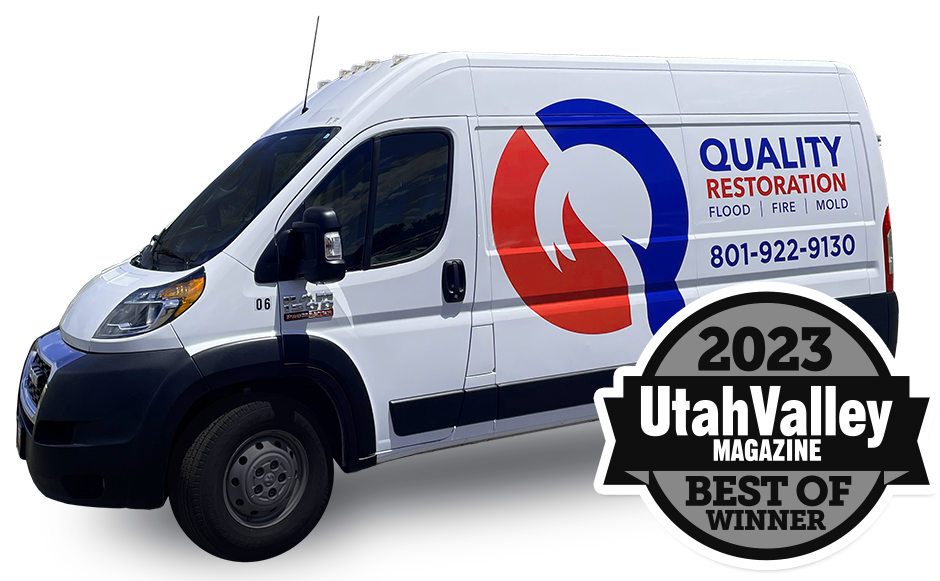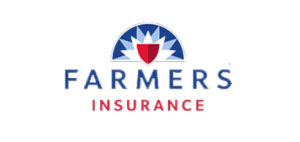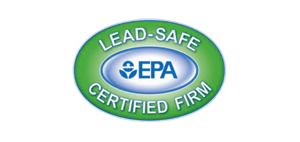Utah may not get hurricanes, but we’re no strangers to powerful storms. Between high winds, heavy snowfall, flash floods, and sudden hailstorms, homeowners across the Wasatch Front and Utah County face serious risks, often with little warning — making storm damage restoration in Utah an essential service when disaster strikes.
When a storm hits, it can damage your roof, siding, windows, and even the foundation of your home. And while the physical damage is stressful enough, navigating cleanup, insurance, and emergency repairs can quickly become overwhelming.
This guide will walk you through everything you need to know about storm damage restoration in Utah: what to do first, what to look for, how the repair process works, and how to protect your home before the next storm rolls in.
Types of Storm Damage in Utah
Storms in Utah can strike in many forms. Some happen during winter, while others arrive quickly in late summer with wind, rain, or hail. Each type of storm brings its own risks and damage patterns, and often requires storm damage restoration in Utah to repair roofing, siding, or flooding issues.
Wind Damage and How It Impacts Utah Homes
High winds can:
- Tear off roof shingles or flashing
- Snap tree limbs onto your home
- Damage siding, fences, and exterior fixtures
- Push water into cracks or under doors
Hail Damage and the Need for Storm Restoration
Hail can cause significant damage even in a short storm. Watch for:
- Dents or cracks in roof shingles
- Damaged gutters or downspouts
- Cracked siding or windows
- Broken skylights
Flash Flooding and Heavy Rain in Utah
Floodwaters can:
- Ruin flooring, drywall, and personal belongings
- Cause mold growth within 24 to 48 hours
- Shift foundations or damage basements
Snow and Ice Damage: A Common Utah Threat
Utah winters bring risks too, such as:
- Ice dams that cause roof leaks
- Heavy snow stressing your roof structure
- Frozen pipes that burst and flood your home
Storm damage can be visible or hidden, so it’s important to inspect carefully after any major weather event.
What to Do Immediately After a Storm in Utah
The minutes and hours after a storm are critical. Acting quickly can reduce damage, speed up storm damage restoration in Utah, and make the insurance process smoother for homeowners throughout the Wasatch Front.
1. Ensure Safety First
- Stay away from downed power lines or standing water near electrical outlets
- Avoid damaged areas until they’ve been inspected
- Use flashlights instead of candles if the power is out
2. Document the Damage
- Take clear photos and videos of every affected area
- Focus on the roof, siding, windows, basement, and yard
- Don’t throw anything away yet unless it’s a safety hazard
3. Prevent Further Damage
- If safe, cover broken windows or roof holes with plastic
- Remove wet rugs or furniture from flooded areas
- Turn off water if pipes may be damaged or leaking
4. Contact Your Insurance Company
- Start your claim as soon as possible
- Ask what documentation they need and whether they recommend an adjuster visit
5. Call a Storm Damage Restoration Professional
A trusted local company like Quality Restoration can help secure your home, clean up debris, and start repairs quickly. The sooner you act, the more damage you can prevent.
How to Assess Storm Damage (Safely)
After a storm, your first instinct might be to inspect everything at once. But safety should come first. If the damage is extensive or involves power lines or structural issues, it’s best to call professionals who specialize in storm damage restoration in Utah to ensure everything is handled safely and correctly.
Step 1: Walk the Exterior for Storm Damage
Start outside, and look for:
- Missing or damaged shingles
- Bent or broken gutters and downspouts
- Siding that’s cracked, dented, or pulled away
- Tree limbs on the roof or leaning against the house
- Pooling water near the foundation
Use binoculars to check the roof if it’s unsafe to climb.
Step 2: Check the Interior for Signs of Water or Wind Damage
Inside your home, check:
- Ceilings and attic for water stains or leaks
- Basements and crawlspaces for flooding or moisture
- Doors and windows for cracks or broken seals
- Any signs of mold or musty smells
Document everything with photos before making temporary fixes.
Step 3: Avoid These Storm Hazards During Inspection
- Never enter rooms with standing water if power is on
- Stay off the roof unless you’re trained and equipped
- Don’t use wet appliances or electronics
If anything feels unsafe, call a restoration team or contractor before going further.
When to Call a Restoration Company in Utah
Not all storm damage is obvious, and waiting too long to take action can lead to bigger problems. If you’re unsure what to look for, it may be time to consult a trusted local expert in storm damage restoration in Utah.
Call a Restoration Company If You Notice:
- Water leaking from the roof or ceiling
- Flooding in the basement or living areas
- Mold growth or a musty smell
- Roof shingles scattered in the yard
- Cracks in walls or the foundation
- Any structural damage from fallen trees or debris
Why It Matters:
- Fast action helps prevent further damage from water, mold, or exposure
- Restoration companies can secure the home, board up openings, and begin drying and repairs immediately
- Most insurance policies require homeowners to take “reasonable steps” to prevent worsening damage
Even if you’re unsure how bad it is, it’s smart to call a restoration company for an inspection. They can assess the situation and guide you on what to do next.
The Storm Damage Cleanup and Repair Process
Storm damage restoration isn’t just about patching things up. It’s a step-by-step process designed to remove hazards, prevent further issues, and return your home to its pre-storm condition.
1. Emergency Response and Assessment
The restoration team arrives to inspect your property, identify safety concerns, and document the full extent of the damage for insurance.
2. Temporary Protection
- Roof tarping to stop water intrusion
- Window or door board-up
- Structural shoring if needed
These quick fixes prevent additional damage while a full plan is created.
3. Water Removal and Drying
If flooding occurred, professionals use:
- Pumps to remove standing water
- Dehumidifiers and fans to dry affected areas
- Moisture meters to ensure no hidden damp spots are left behind
4. Cleanup and Sanitizing
- Debris, damaged materials, and insulation are removed
- Surfaces are disinfected to prevent mold and bacteria
- Odor control treatments may be applied if needed
5. Repairs and Restoration
Once the space is clean and dry:
- Roofs are repaired or replaced
- Siding, drywall, flooring, and paint are restored
- Your home is returned to its original condition or better
Does Homeowners Insurance Cover Storm Damage in Utah?
Most homeowners insurance policies cover storm damage, but only under certain conditions. Knowing what’s included (and what’s not) helps you act fast and avoid surprises during the claims process.
What’s Typically Covered:
- Wind damage to roofs, siding, and windows
- Hail damage to shingles, gutters, or skylights
- Water damage from rain or snow only if it enters through a covered structural opening
- Tree removal if the tree damages a covered structure
- Temporary living expenses if your home becomes uninhabitable
What’s Usually Not Covered:
- Flooding from rising water or groundwater (requires separate flood insurance)
- Gradual damage from poor maintenance or old roofing
- Sewer backups (unless you have an add-on policy or rider)
Tips to Make the Claim Process Easier:
- Take detailed photos of the damage before any repairs
- Keep receipts for temporary fixes or hotel stays
- Save all communication with your insurance provider
- Get a licensed restoration contractor to provide an itemized estimate
Still not sure if you’re covered? Call your agent and ask specifically about wind, hail, or flooding related to your damage.
Emergency Board-Up and Tarping Services
One of the most important steps after storm damage is securing your home quickly. Emergency board-up and tarping services are designed to prevent additional damage and protect your property while restoration is underway.
Why It Matters:
- Keeps out rain, wind, pests, and intruders
- Reduces the risk of further water intrusion
- Shows your insurance company you took “reasonable steps” to protect the home
Common Situations Where These Services Are Needed:
- Broken windows or glass doors
- Holes in the roof from wind, hail, or fallen trees
- Gaps in siding or exposed attic areas
- Garage doors or exterior walls pushed in by debris
What to Expect:
- Tarping is installed over damaged roof sections using wood framing or sandbag weights
- Openings are covered with plywood and anchored securely
- Temporary protection stays in place until full repairs can begin
Fast board-up and tarping not only reduce your risk, they also help you avoid delays in insurance claims and restoration.
Storm Prep Tips for Utah Homes
You can’t stop a storm, but you can make your home more resilient. These preparation tips help minimize damage before the next wind, hail, or flood event hits.
Roof and Gutters
- Inspect your roof annually for missing shingles or weak spots
- Clean gutters and downspouts to ensure water flows away from your home
- Install gutter guards to reduce clogs from leaves or debris
Windows and Doors
- Apply storm-resistant film to windows for extra protection
- Reinforce garage doors to withstand wind pressure
- Seal window and door frames to prevent water leaks
Yard and Landscaping
- Trim back trees and remove dead limbs
- Anchor patio furniture, grills, and trash bins
- Use gravel or ground cover instead of mulch near your foundation to reduce water pooling
Basement and Foundation
- Install a sump pump and test it regularly
- Use window well covers to block water from entering
- Grade soil so water flows away from the foundation
Emergency Preparedness
- Keep an emergency kit with flashlights, first aid, and important documents
- Have a backup phone charger or power source
- Know how to shut off water, gas, and electricity if needed
Taking these steps now can help you avoid thousands of dollars in damage later.
Why Choose a Local Storm Damage Expert
When a storm hits, you need more than just repairs, you need someone who understands the unique challenges of Utah’s weather, building codes, and insurance process. That’s where a local restoration expert makes all the difference.
Faster Response Times
Local teams can often be on-site within hours. That quick action helps reduce further damage and speeds up your insurance claim.
Familiar with Utah’s Weather Patterns
From flash floods in Spanish Fork to windstorms in Lehi, a Utah-based company knows what to expect — and how to fix it fast.
Local Reputation and Accountability
National chains may leave once the work is done. Local companies rely on referrals, reviews, and long-term trust. That means better communication and better results.
Insurance and Code Experience
A local expert will know what documentation your insurer expects, and they’ll make sure all repairs meet Utah building codes and safety regulations.
Community-Focused Service
Hiring local means your money stays in the community, and you’re working with a team that truly cares about getting your home back to normal.
Storm Damage Restoration FAQs
How soon should I call a restoration company after a storm?
Immediately. The sooner you act, the more damage you can prevent. Waiting too long may also affect your insurance coverage.
Does homeowners insurance cover storm damage?
Yes, in most cases. Damage from wind, hail, or fallen trees is typically covered. However, flooding and gradual wear and tear are usually not included unless you have additional policies.
Can I stay in my home after storm damage?
It depends on the severity. If there are roof holes, electrical issues, or structural concerns, it’s safest to relocate until repairs are made.
How long does storm damage restoration in Utah take?
Most jobs take anywhere from a few days to several weeks depending on the extent of damage, availability of materials, and weather conditions.
What are signs of hidden damage after a storm?
- Musty smells or water stains on ceilings
- Loose or missing shingles
- Dents in gutters or siding
- Cracks in the foundation or interior walls
- Mold growth after 24 to 48 hours of moisture
Should I make temporary repairs before calling my insurance?
Yes, but take photos first. Cover broken windows or roof areas to prevent further damage, but leave major repairs to professionals.




















